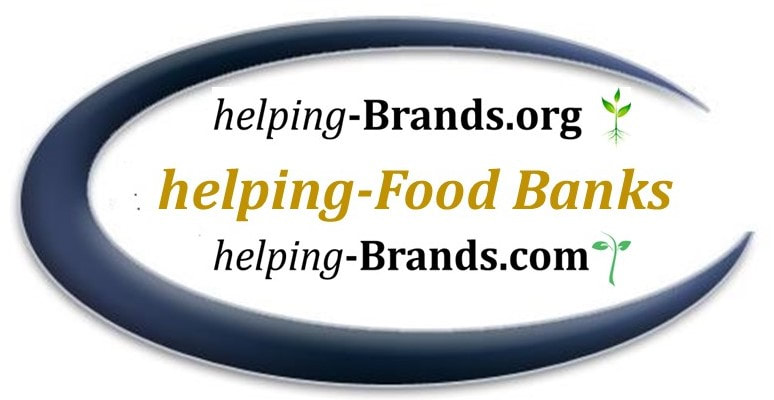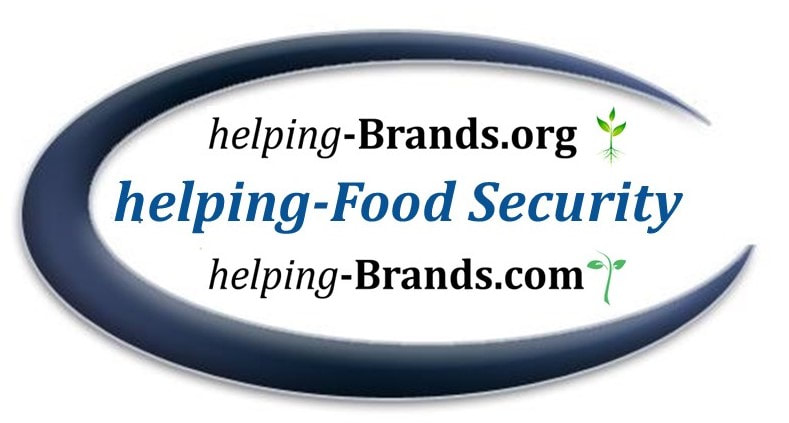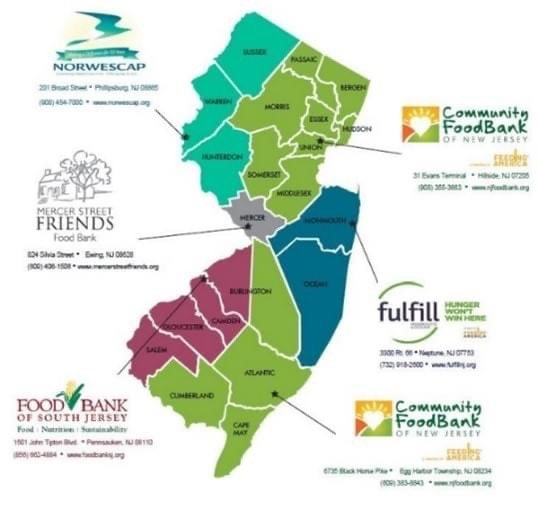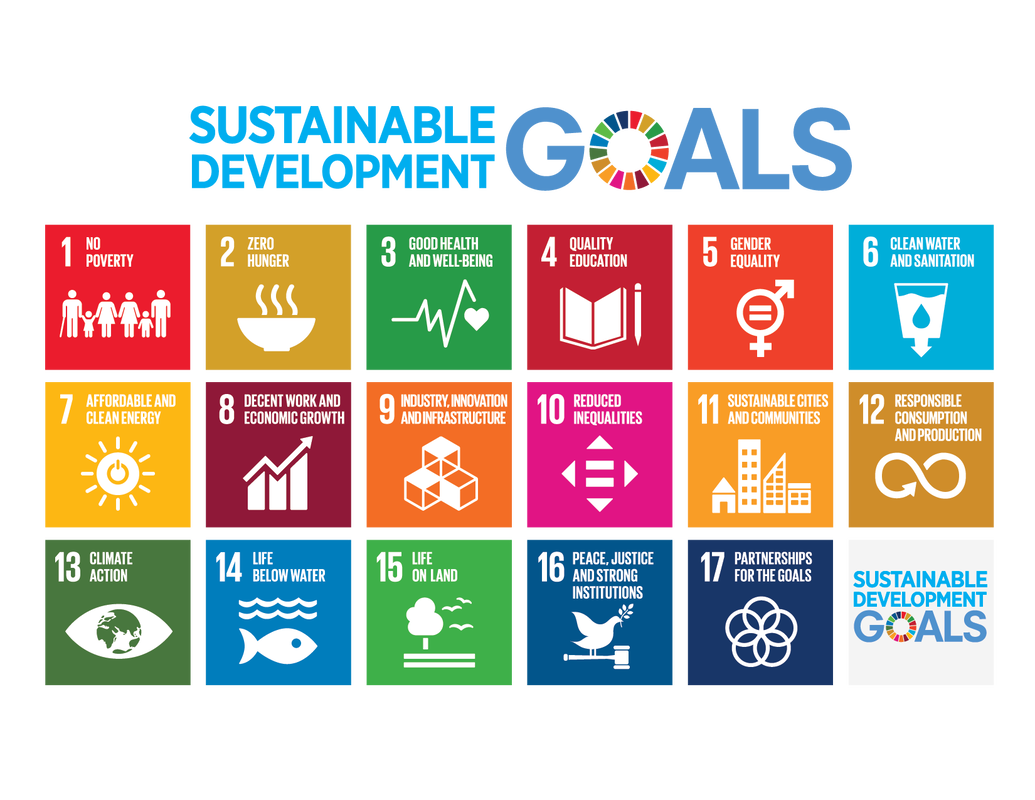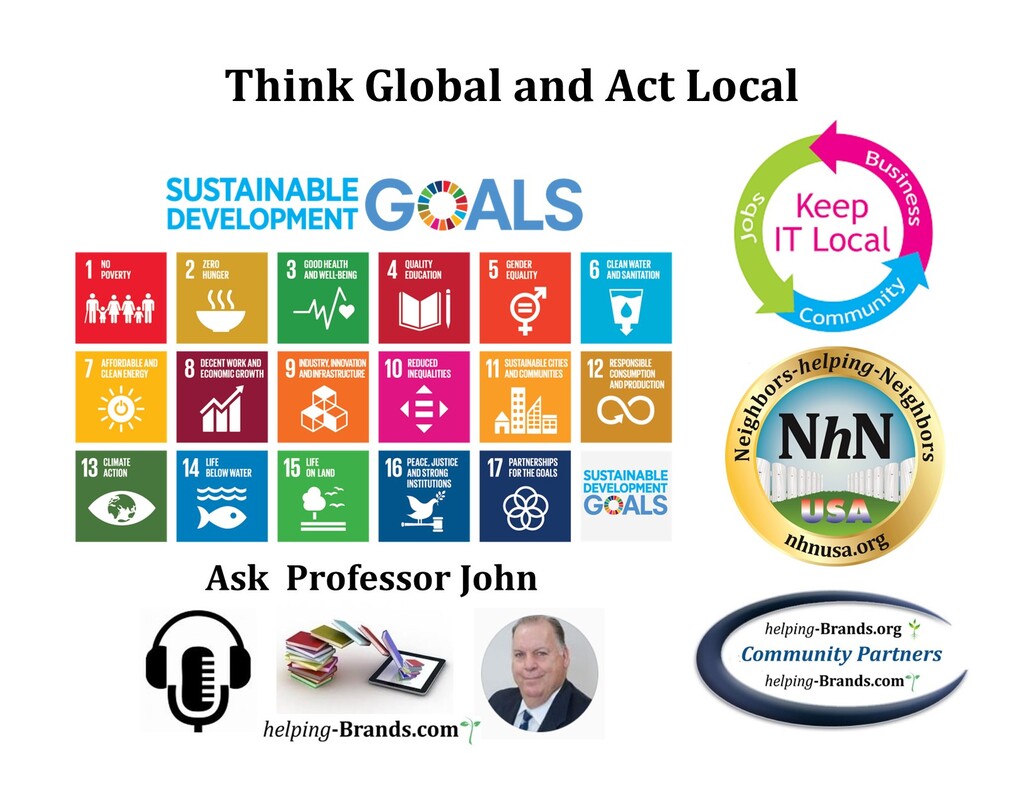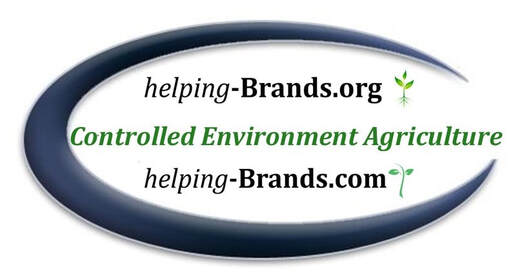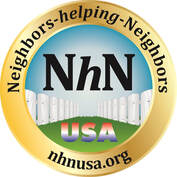helping solve food deserts
Live Plants are EBT SNAP Benefit eligible on AmazonLeading efforts to create partnerships across
|
Food DesertsA food desert is an area that has limited access to affordable and nutritious food, in contrast with an area with higher access to supermarkets or vegetable shops with fresh foods, which is called a food oasis.
NutritionNutrition is about eating a healthy and balanced diet. Food and drink provide the energy and nutrients you need to be healthy.
Food BanksA food bank is a non-profit, charitable organization that distributes food to those who have difficulty purchasing enough to avoid hunger, usually through intermediaries like food pantries and soup kitchens.
|
Food InsecurityFood security is the measure of the availability of food and individuals' ability to access it. According to the United Nations' Committee on World Food Security, food security is defined as meaning that all people, at all times, have physical, social, and economic access to sufficient, safe, and nutritious food that meets their food preferences and dietary needs for an active and healthy life.
HealthEating well helps to reduce the risk of physical health problems like heart disease and diabetes. It also helps with sleeping patterns, energy levels, and your general health. ... Some foods can lift your mood, energy levels, and concentration, while others can have the opposite effect.
Restaurants helping in needUnique programs where nonprofits spend grant money buying meals from restaurants in need for those in need.
|
NJEDA Board Approves $30 Million Program to Strengthen
Food Security and Access in NJ Food Desert Communities
FEED NJ will provide grants of up to $500,000 to entities at the forefront of food access work
Food Security and Access in NJ Food Desert Communities
FEED NJ will provide grants of up to $500,000 to entities at the forefront of food access work
National Articles
Why Actress Tiffany Haddish Wants to Be a Grocer
Star hopes to open Diaspora Groceries in South Central L.A. in 2024
Star hopes to open Diaspora Groceries in South Central L.A. in 2024
Imagine having to walk more than 20 minutes to buy some fruit. This is the reality of nearly 40% of the U.S. population living in food deserts.
As currently defined by the United States Department of Agriculture, a food desert is an urban area where you have to travel more than 1 mile to find a grocery store that sells healthy food. And while the term “desert” implies someone wandering through a barren landscape, food deserts are neighborhoods where socially disadvantaged people live with little access to fresh, healthy produce.
As currently defined by the United States Department of Agriculture, a food desert is an urban area where you have to travel more than 1 mile to find a grocery store that sells healthy food. And while the term “desert” implies someone wandering through a barren landscape, food deserts are neighborhoods where socially disadvantaged people live with little access to fresh, healthy produce.
Food Delivery Apps Now Have Expansive Reach in Food Deserts Delivery services could fill gaps in many low-income parts of the U.S. without a grocery store nearby — if they’re affordable.
Go to the Atlas - USDA ERS
Facts about hunger in America
According to the USDA, more than 38 million people, including 12 million children, in the United States are food insecure.
- The pandemic has increased food insecurity among families with children and communities of color, who already faced hunger at much higher rates before the pandemic.
- Every community in the country is home to families who face hunger.
- But rural communities are especially hard hit by hunger. Many households that experience food insecurity do not qualify for federal nutrition programs and visit their local food banks and other food programs for extra support.
- Hunger in African American, Latino, and Native American communities is higher because of systemic racial injustice.
- To achieve a hunger-free America, we must address the root causes of hunger and structural and systemic inequities.
Articles NY on food deserts:
Articles NJ on food deserts:
FOOD SECURITY PLANNING GRANT PROGRAM Eligibility for this grant program is limited to Municipal government, County government and Redevelopment agencies whose jurisdiction includes all or part of a designated Food Desert Community. To be considered for this competitive planning grant, eligible entities are required to collaborate with their community stakeholders and develop an actionable plan that addresses the challenges around food access and food security.
47 Bergen Food Pantries Will Split $500,000 Grant: Commissioners Nonprofits dedicated to fighting hunger in Bergen County will split half a million dollars in federal grant money.
NJ To Offer Up To $240 Million To Aid Food Security In ‘Deserts’ February 22, 2022
A Novel Pilot Brings Vertical Farms to Public Housing 10.21
Jersey City is trying a new approach to bring healthier eating to low-income communities: on-site indoor farms.
Jersey City is trying a new approach to bring healthier eating to low-income communities: on-site indoor farms.
March 9, 2022 - ITEM: Proposed Food Desert Communities under the Food Desert Relief Act
REQUEST: To approve the list, map, and methodology designating 50 New Jersey Food Desert
Communities, as required by the Food Desert Relief Act. This list will be used in full or in part to determine communities eligible for tax credits, grants, loans, and/or technical assistance under the Food Desert Relief Act and may be used in full or in part to determine eligibility for other future NJEDA food security programs.
REQUEST: To approve the list, map, and methodology designating 50 New Jersey Food Desert
Communities, as required by the Food Desert Relief Act. This list will be used in full or in part to determine communities eligible for tax credits, grants, loans, and/or technical assistance under the Food Desert Relief Act and may be used in full or in part to determine eligibility for other future NJEDA food security programs.
New Jersey Economic Development Authority’s
listening sessions on the Food Desert Relief Act.
You can find recordings of the two listening sessions at https://youtu.be/kyRd9uWj3VU for Jan. 12, and https://youtu.be/vqAQKaVIjpI for Jan. 13.
Additional information on the Food Desert Relief Act can be found at Program Specific Feedback - NJEDA We are accepting written feedback on our proposed Food Desert Community designation list through February 4, 2022.
New Jersey Economic Development Authority (NJEDA)
For information about NJEDA’s products and services, please visit us on the web: www.njeda.com
On Tuesday 1/4/22, the New Jersey Economic Development Authority (NJEDA) released a ranked list of 50 proposed food deserts across the state, where residents have been struggling to find healthy eating options. NEW JERSEY — Sometimes hunger hides in plain sight.
Thanks to supply chain woes caused by the coronavirus pandemic, many New Jersey residents have found themselves returning from trips to the grocery store without key items over the past year: vegetables, fruits and freshly prepared, healthy meals. But that’s just a small taste of what it’s like to live in a “food desert.”
On Tuesday, the New Jersey Economic Development Authority (NJEDA) released a ranked list of 50 proposed food deserts across the state, where residents have been struggling to find healthy eating options long before the pandemic began
(see it below).
The communities on the list are all facing a different combination of problems. Some lack enough healthy options at local supermarkets. Others are plagued by an oversaturation of fast food restaurants. And some simply don’t have any way for people without cars to get to the grocery store in the first place. But they all have something in common, advocates say.
They deserve better. Let's go!
Hopefully, a massive wave of state funding will help to turn things around, NJEDA officials said. Over the next several years, an estimated $240 million in funds will be made available to communities on the list through the Food Desert Relief Act, which is part of the Economic Recovery Act signed into law by Gov. Phil Murphy in January 2021.
Read More: Relief In The Works For 'Food Deserts,' Food Insecurity In NJ
Here’s how it will work, officials said:
“The Food Desert Relief Act directs the NJEDA to address the food security needs of communities across New Jersey by providing up to $40 million per year for six years in tax credits, loans, grants and/or technical assistance to increase access to nutritious foods and develop new approaches to alleviate food deserts. The act strives to facilitate development, construction, and sustainable operations of new supermarkets and grocery stores within designated Food Desert Communities. It also aims to strengthen existing community assets by arming them with the necessary equipment and infrastructure to provide healthier food options. Additionally, it is designed to help food retailers respond to the shift to e-commerce, including for the Supplemental Nutrition Assistance Program (SNAP) and the Special Supplemental Nutrition Program for Women, Infants and Children (WIC).
”There is an urgent need for relief, statistics show. According to recent data from the Community Food Bank of New Jersey, 800,000 New Jersey residents face hunger every day. Feeding America noted that 192,580 New Jersey children – about one in 10 – face hunger. And the number of individuals receiving NJ SNAP benefits (formerly known as food stamps) rose more than 15 percent, from 769,331 in September 2020 to 887,467 in September 2021, according to data from the New Jersey Department of Human Services.
“We have an obligation as state leaders, and as human beings, to ensure that no New Jerseyan goes to bed hungry, regardless of their socioeconomic status,” Lt. Gov. Sheila Oliver said.
“By crafting one of the most comprehensive food desert designations in the country, we are leading the nation in taking necessary steps to eradicate food deserts and remove the barriers keeping our state’s residents from accessing nutritious food,” Oliver added.
“Far too often, hunger hides in plain sight,” Assembly Speaker Craig Coughlin agreed, calling the NJEDA’s draft list an “important step” in the state’s battle against food insecurity.
See the proposed food deserts below, in ranked order (an asterisk * means that the whole municipality is included).
listening sessions on the Food Desert Relief Act.
You can find recordings of the two listening sessions at https://youtu.be/kyRd9uWj3VU for Jan. 12, and https://youtu.be/vqAQKaVIjpI for Jan. 13.
Additional information on the Food Desert Relief Act can be found at Program Specific Feedback - NJEDA We are accepting written feedback on our proposed Food Desert Community designation list through February 4, 2022.
New Jersey Economic Development Authority (NJEDA)
For information about NJEDA’s products and services, please visit us on the web: www.njeda.com
On Tuesday 1/4/22, the New Jersey Economic Development Authority (NJEDA) released a ranked list of 50 proposed food deserts across the state, where residents have been struggling to find healthy eating options. NEW JERSEY — Sometimes hunger hides in plain sight.
Thanks to supply chain woes caused by the coronavirus pandemic, many New Jersey residents have found themselves returning from trips to the grocery store without key items over the past year: vegetables, fruits and freshly prepared, healthy meals. But that’s just a small taste of what it’s like to live in a “food desert.”
On Tuesday, the New Jersey Economic Development Authority (NJEDA) released a ranked list of 50 proposed food deserts across the state, where residents have been struggling to find healthy eating options long before the pandemic began
(see it below).
The communities on the list are all facing a different combination of problems. Some lack enough healthy options at local supermarkets. Others are plagued by an oversaturation of fast food restaurants. And some simply don’t have any way for people without cars to get to the grocery store in the first place. But they all have something in common, advocates say.
They deserve better. Let's go!
Hopefully, a massive wave of state funding will help to turn things around, NJEDA officials said. Over the next several years, an estimated $240 million in funds will be made available to communities on the list through the Food Desert Relief Act, which is part of the Economic Recovery Act signed into law by Gov. Phil Murphy in January 2021.
Read More: Relief In The Works For 'Food Deserts,' Food Insecurity In NJ
Here’s how it will work, officials said:
“The Food Desert Relief Act directs the NJEDA to address the food security needs of communities across New Jersey by providing up to $40 million per year for six years in tax credits, loans, grants and/or technical assistance to increase access to nutritious foods and develop new approaches to alleviate food deserts. The act strives to facilitate development, construction, and sustainable operations of new supermarkets and grocery stores within designated Food Desert Communities. It also aims to strengthen existing community assets by arming them with the necessary equipment and infrastructure to provide healthier food options. Additionally, it is designed to help food retailers respond to the shift to e-commerce, including for the Supplemental Nutrition Assistance Program (SNAP) and the Special Supplemental Nutrition Program for Women, Infants and Children (WIC).
”There is an urgent need for relief, statistics show. According to recent data from the Community Food Bank of New Jersey, 800,000 New Jersey residents face hunger every day. Feeding America noted that 192,580 New Jersey children – about one in 10 – face hunger. And the number of individuals receiving NJ SNAP benefits (formerly known as food stamps) rose more than 15 percent, from 769,331 in September 2020 to 887,467 in September 2021, according to data from the New Jersey Department of Human Services.
“We have an obligation as state leaders, and as human beings, to ensure that no New Jerseyan goes to bed hungry, regardless of their socioeconomic status,” Lt. Gov. Sheila Oliver said.
“By crafting one of the most comprehensive food desert designations in the country, we are leading the nation in taking necessary steps to eradicate food deserts and remove the barriers keeping our state’s residents from accessing nutritious food,” Oliver added.
“Far too often, hunger hides in plain sight,” Assembly Speaker Craig Coughlin agreed, calling the NJEDA’s draft list an “important step” in the state’s battle against food insecurity.
See the proposed food deserts below, in ranked order (an asterisk * means that the whole municipality is included).
See the full list with ranking scores here. See an interactive online map with the proposed locations here.
|
1 - North, Central and SouthCamden/Woodlynne*
2 - Atlantic City/Ventnor 3 - Newark South 4 - Newark West 5 - Paterson South 6 - Camden East/Pennsauken 7 - Newark East 8 - Newark North and Central 9 - Passaic City 10 - Salem City* 11 - Paterson North 12 - Bridgeton/Fairfield Twp/Lawrence Twp* 13 - New Brunswick City 14 - Trenton City 15 - Elizabeth East 16 - Asbury Park City 17 - Jersey City South 18 - Penns Grove*/Carneys Point* 19 - Perth Amboy City 20 - Irvington Township 21 - Elizabeth West 22 - Union City 23 - Lindenwold/Clementon* 24 - Lakewood North 25 - Pleasantville/Absecon |
26 - Red Bank Borough
27 - East Orange City 28 - Orange/West Orange/Montclair 29 - North Bergen/West New York/Guttenberg 30 - Long Branch City 31 - Jersey City North 32 - Jersey City Central 33 - Woodbine Borough* 34 - Millville/Commercial Twp* 35 - Keansburg Borough* 36 - Prospect Park/Haledon/Hawthorne 37 - Paulsboro Borough 38 - Lakewood South 39 - Fairview Borough 40 - Linden/Roselle 41 - Egg Harbor City* 42 - Burlington City 43 - Vineland City 44 - Plainfield City 45 - Phillipsburg Town 46 - Bayonne City 47 - Dover Town 48 - Bound Brook Borough 49 - High Bridge Borough 50 - Montague Township* |
Help for Hunger
Amazon is driven by the belief that no family should go without basic needs like food and housing. As millions of families struggle to secure food for their families, Amazon has a unique role to play providing a critical service for families in need. Through programs like Community Delivery and the Right Now Needs Funds, Amazon has long partnered with organizations that share our commitment.
Amazon is driven by the belief that no family should go without basic needs like food and housing. As millions of families struggle to secure food for their families, Amazon has a unique role to play providing a critical service for families in need. Through programs like Community Delivery and the Right Now Needs Funds, Amazon has long partnered with organizations that share our commitment.
| |||||||
Bonnie & AmpleHarvest.org
Our Grow More Feed More initiative with AmpleHarvest.org encourages home gardeners to donate surplus produce to their nearest food pantry. The partnership was formed to help combat food insecurity caused by COVID-19, but the need for fresh, homegrown food among those without it continues to grow, and we’ll continue our commitment long after the pandemic is behind us. Both at the Bonnie Plants corporate office and at our growing stations around the country, we cultivate additional produce to help support local food pantries. Additionally, Bonnie Plants has already committed more than $250,000 to help fight hunger and we continue to donate 5 percent of all BonniePlants.com sales to AmpleHarvest.org.
Our Grow More Feed More initiative with AmpleHarvest.org encourages home gardeners to donate surplus produce to their nearest food pantry. The partnership was formed to help combat food insecurity caused by COVID-19, but the need for fresh, homegrown food among those without it continues to grow, and we’ll continue our commitment long after the pandemic is behind us. Both at the Bonnie Plants corporate office and at our growing stations around the country, we cultivate additional produce to help support local food pantries. Additionally, Bonnie Plants has already committed more than $250,000 to help fight hunger and we continue to donate 5 percent of all BonniePlants.com sales to AmpleHarvest.org.






